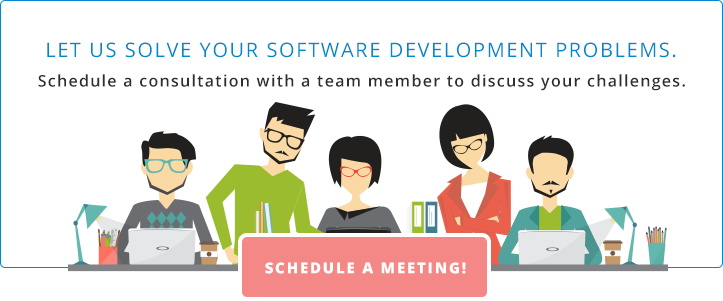Over a few decades, we have certainly witnessed the rise of software and their growing importance in our daily lives. Most of the businesses now run on software, and they rely on these softwares for their business processes and operations.
However, there are certain aspects of the software, software product development, software product management, software development process, and software product life cycle, which aren’t properly understood.
Along with this, the role of software product manager and principles of software product management, etc. are required to be investigated. Here, in this article, we discuss each of these aspects in detail.
- What is Software
- What is Product
- What is Software Product Management
- What are the basic life-cycle of software products
- The need for software product management
- The role of software product manager
- Product management principles
- How to choose software development methodology
What is Software?
Essentially a software is a definite set of instructions, data, or even programs that are used to operate computers as well as execute particular operations and tasks.
Basically, opposite to hardware that describes the physical aspects of any computer, the software is a given generic term that is used to refer to different programs, applications, and scripts that run on a device. It can easily be thought of as the variable aspect of the computer.
It is generally divided into application software, which is also known as user downloaded programs that actually fulfill a particular need or want, and system software, which consists of operating systems and different programs which support the application software.

Also, the term middleware is often utilized to describe programming which mediates between the system and application software or between two separate types of application software.
Also, there is an additional category of the software, which is the utility, which is a small as well as useful program that has limited capability. Few utilities are embedded with operating systems.
Similar to applications, utilities tend to be installable separately and are capable of being utilized independently from the remainder of the operating system.
What is a Product?
A product is essentially something physical or sometimes not, which is created through a particular process and offers benefits to a given market.
From this point of view, a chair would also be a product. So would be Microsoft Office. Also, agile consulting services would be a definite product.
A product can be something physical or even digital such as an e-book, MS Office, streaming videos. It can even be a service too. Also, a product can just be a notion or an idea, such as a patentable algorithm.
Every one of these is created through a process through one or more activities. The process which creates a particular product doesn’t need to be formal or defined. Even the creators may not even be aware of the entire process.

Also, whenever we identify the sub-products within a particular larger product, we have to be careful with every sub-product that offers benefits to a particular market.
However, it doesn’t say that something needs to be purchased for it to be an actual product. However, to be considered as a given product, the item needs to satisfy a desire or need. Each product should provide benefits to the market.
What is Software Product Management?
Essentially, software product management is a particular discipline of creating, implementing as well as managing software or different digital products by taking into account various life-cycle considerations as well as the audience.
Basically, it is the discipline and a business process that governs a product right from its inception to the entire market or to the customer delivery as well as service to maximize revenue. Custom software development requirements software product management.
What are the basic life-cycle of software products?
The most simplified representation of the entire life cycle of software products is mentioned below. The various stages are:
- Ideation
- Design
- Development
- Deployment
- Improvement
- End of Life
Ideation
It is the actual trigger of the entire process. The notion for the creation of a software product is generally based only on the general idea and set of experiences. Ideation is essentially a very creative process, indeed. It is the bedrock of custom software development.
Design
It is a careful as well as methodical design as well as product definition or even re-design after the review, which includes not only the actual technical design.
Development
It consists of implementation, testing, and improvements in the design wherever needed.
Deployment
It is the introduction of the product to the actual market or product’s release of the next version. It requires careful monitoring, as well as measurements, which are required at this particular step.
Improvement
In order to extend the product life or increase its overall profitability, it requires regular improvements to the product design, which is required. Once you have reviewed the results from the past release and prioritizing of the latest features, as well as addressing the existing problems, the entire process goes back to the actual design phase.
End of Life
At one particular point, it isn’t wise anymore to extend the life of the product.
This product life cycle is essentially valid for any particular product, even for software products. Also, this process even matches the most versatile and modern agile software development process.
It is once again confirmation of the notion that the marketing which operates on the entire product life cycle can’t actually be decoupled from the overall software development as well as other functions of the software development company.
The life cycle of the product and its different processes apply to the particular technology, a project, or even a product family, a program, a particular product version, and much more. Irrespective of how you zoom on it, it always behaves like the product life cycle over and over again.
The need for software product management
In order to develop as well sell and support software product, a business requires to solve a particular market problem, readily understands its entire market, even identify the opportunities and even develop and also market a right piece of software.
So, the need for software product management as a key and core business function in software development services is there.
Even hardware, as well as physical products firms and companies, can require software product management, as software, as well as digital systems, are generally part of the actual delivery like as when offering operating system, along with supporting a physical product or even the software embedded in a particular device.
The role of software product manager
Essentially, a software product manager not only leads but also manages one or different products right from the inception to the entire phase-out to create the actual customer value and even deliver the most important measurable business benefits.
The manager collaborates with different cross-functional teams like sales, marketing, engineering, quality assurance and testing, finance, customer service, along with manufacturing and installation, to create a product that fulfills the entire product vision and to completely turn it into a business success.
Also, the role determines what particular products, subsequent enhancements, and features to be built and is accountable for the entire business success with the entire product portfolio.
Also, the product manager even develops the entire product roadmap and is essentially responsible for the complete value chain of a product throughout its complete life cycle.
Also, software product management roles can easily be further divided on the basis of product owner, technical product manager, product marketing manager, and strategic product manager.
The software program managers essentially focus on the entire project deliveries of complete engineering processes, documentation, design, planning, execution, along with operations and feedback.
Software product managers can easily deliver better and improved results by:
- Acting such as embedded CEO.
- Completely driving strategy as well as a portfolio from the market as well as customer value.
- Remaining enthusiastic about their own software product and software product development.
- Keeping a profound knowledge of products’ markets, along with customers and portfolio.
- Deftly measuring the contribution of products on sales as well as profits.
- Regularly checking assumptions like business cases.
- By taking calculated risks and managing them.
- Improving and fostering teamwork on the basis of lean product developments.
Product management principles
Software development services which are responsible for the production, as well as the distribution of the software products, have a lot to consider. Every software product has a given lifecycle.
Hence, in order for that lifecycle to last as long as it possibly can, few considerations have to be made. A good product manager remains vigilant in their overall efforts to do what is actually best for the product that they are essentially selling.
- Tracking Competitors
- Looking at the Data
- Know the Requirements of Customer
- Delivering Quality Products
Tracking Competitors
When you are essentially dealing with a product that is in high demand, then you will naturally have a huge number of competitors who are trying to take a section of your market share.
Hence, it is quite wise to look at what all of the competitors are actually doing well and then incorporate those particular aspects into how you actually do your business.
Also, be very careful with this particular pursuits as it can often create the potential that you could easily lose track of your own identity as a company or an organization.
Looking at the Data
When it comes down to the amount of data that surrounds any product, it is quite astounding. Essentially, the overall quantity if the data you have actually collected means absolutely nothing in case you are unable to do anything with that particular data.
Hence, you need to be able to look at all the facts as well as figures and see how all those digits fit into the bigger and grand scheme of the things. Utilizing this particular information, you need to able to forge a particular plan for how you will actually proceed in the upcoming future.
Know the Requirements of Customer
Even though it sounds cliché that customer is always right, but nothing is truer than this. Your customers are essentially the ones who actually go out and eventually buy your products.
Hence, you have to keep their requirements in mind as you are essentially working to maintain the overall current position of the projects as well as the design of the latest products. Also, your investment in them will certainly pay dividends later on down the line.
Delivering Quality Products
When in the production process, you might even feel tempted to try to cut costs in the hopes that you can easily and efficiently maximize the profits. However, it is important to know that avoiding cutting costs is essential else you diminish the quality of the product.
Also, you need to have a product that is both affordable for you as well as the people you wish to buy it. Even the customers have different options out there that it’s only right that your own product should rank at the very top of their own list.
It is an evident fact that a company’s software inventory can easily make or even break the entire viability of its complete organizational framework. Essentially, software infrastructure is rapidly becoming the most precious asset for most of the brands in different industries.
However, the increasing importance of the software in the entire enterprise ecosystem has certainly given rise to a huge number of choices in different phases of the web as well as app development along with custom software development.
How to choose software development methodology?
At present, there is a huge requirement to make insightful and incisive decisions concerning the finest detail of web and application development.
Also, these decisions also encompass the different choices of functionalities as well as features of the entire software development life cycle or popularly known as the SDLC model, which is selected and the overall criteria for hiring the right software development services.
Basically, making the wrong choices in any of these particular aspects can easily lead to much-delayed deliveries, dissatisfied customers, and employees and can be an ultimate recipe for disaster. Let’s take an overview of some of the most popularly used SDLCs that are available.
- The Waterfall Model
- The Iterative Model
- The Agile Methodology
The Waterfall Model
It is the oldest life cycle model. Considered to be a conventional technique that has proven itself to be a quite highly effective method. It refers to a development model with quite clearly defined and structured sequential phases as well as phase objectives.
Certainly, it needs intermediate reviews of the work that is in progress in order to make sure that the needs for each phase are actually met completely before the next phases start.
The Iterative Model
It approaches the entire software product development on quite an incremental basis. Essentially, it starts with a quite partially completed system along with gradually integrating more features until it finally develops the complete system.
Using this approach, the entire iterative method certainly allows for better flexibility in the entire development process than the previous method, the waterfall process, since it essentially makes for easier integration of the latest functions as well as implementations of changes.
Also, in subsequent iterations, one can easily implement different improvements to the past iterations and do it with ease.
The Agile Methodology
Essentially, it draws from the iterative method to cater to the requirements generated by the fast progressions owing to the internet. Hence, in this particular method, the progress is basically accomplished in forms of bits and stages, such as the iteration model.
However, the main difference is that the actual progress occurs much faster in Agile. It completely fast-tracks the time-frames right from months to within weeks.
Hence, it is becoming quite popular due to this. Also, it even enhances the collaborations as well as flexibility in the entire development process, and this helps custom website development services handle their changes to the standards and the different peculiar needs of the software development with much greater effectiveness and versatility.
- Finding the required level of flexibility in the overall requirements
- Defining the End Users Clearly
- Considering the Scope and Scale of the Development
- Determining whether to sprint or marathon the time-frame
Finding the required level of flexibility in the overall requirements
First, you have to consider the flexibility of the specification before you choose a software development methodology. Both Agile, as well as Iterative methods, are quite ideal for website and application development in which the changes are quire regularly introduced.
However, the waterfall is best for classic web and application development where predictability and stability in the different development phases are preeminent.
Defining the End Users Clearly
In case you are focusing a controlled group of particular end-users, then you are most likely to have a particularly fixed set of needs to work with, and this would certainly make the waterfall method most ideal for web and application development.
However, if your targeted end-users are quite dispersed, you are most likely to deal with major feedbacks after the launch of the app while requesting the inclusion of latest and new features, and hence iterative and Agile methods would be the best software development methodology in this particular case.
Considering the Scope and Scale of the Development
Essentially, the scale of the project actually determines the total number of developers required to handle it. The bigger the project, the much larger the size of the entire development team.
Hence, larger projects require much more orderly and elaborate project management plans, and in these cases, the waterfall module is well-suited.
Determining whether to sprint or marathon the time-frame
In case of development which unfolds via sprints, the iterative and Agile methods are the best since they actually facilitate the overall release of partially done systems to generate an actual impression of much rapid progression.
However, if the development time-frame is long-term and there are no deadlines which are fast-approaching, then the waterfall method is the best choice.
Conclusion
Software is an essential part of business processes and operations. Here we have discussed software product development, what software and products are, what are the roles of software product managers and what is meant by software product management, along with what different software development methodologies in the market





























